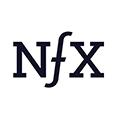At NFX, we work with our 300+ companies to maximize their impact and durability. Each startup is very different in a lot of ways, but there’s a single property we’ve seen that lies behind most of their success.
That property is network effects.
Network effects are mechanisms in a product and business where every new user makes the product/service/experience more valuable to every other user. Network effects are foundational to our businesses, not to mention our lives. This is why we’re constantly looking for new ways to understand them.
It’s hard to quantify the value of network effects perfectly, but in 2017 we set out on a mission: To create an approximate understanding of how much value network effects had already generated in tech.
We started with a back-of-the-napkin calculation. We focused on 336 of the top companies, valued over $1 billion in tech. We reviewed their business models, searching for signs of the 13 different network effects we had defined at the time (now we have 16). Just 35 percent of those companies had network effects at their core, but at the time they were responsible for 70 percent of the total value in our spreadsheet.
Now, there are over 1,400 unicorn companies in tech. We’ve recently lived through soaring markets, a pandemic, and a downturn. It was time to see if anything had changed. The takeaway: network effects are (still) responsible for 70 percent of the value in tech in 2022.
But there’s nothing more powerful than seeing the underlying math for yourself.
Disclaimer: This isn’t a comprehensive review or perfect statistical analysis, but we hope it’s a valuable starting point for founders as they look to grow their companies.
The Methodology
In our 2022 study, we included 1,411 unicorn companies started after 1994 (sourced via Pitchbook) – the year when the internet became widely available.
The list is subject to change, and it’s not absolutely exhaustive. For example, we omitted Microsoft because it was founded before 1994.
(Had we included Microsoft our “amount of value in tech created by network effects” number likely would have been a lot higher. Microsoft’s Windows operating system employs a two-sided platform network effect and the company’s use of network effects has been extensively documented by NFX and others).
The next step was to go one by one and calculate which companies on this list deploy any of NFX’s 16 network effects in their business models.
Pure Network Effect Businesses
Meta’s use of network effects has also been widely documented by NFX and others.
Facebook and Instagram, Meta’s core products, are social networks. Facebook primarily employs a personal network effect: once your friends join Facebook, you want to join. As more people join, the network grows, increasing in value for each previous user etc.
That’s just one network effect employed by Facebook. Facebook messenger also uses a personal utility network effect: when people use a networked product (like a chat service) for critical day-to-day communication. For example, people use Facebook messenger or WhatsApp (another Meta-owned company) to communicate with friends or relatives.
We count a company like Meta as a 100 percent network effect business because network effects are a core part of their product and business model. Therefore, we include its full valuation in our final sum.
Half Network Effects, Half Other Defensibilities
We know that not all companies are 100% built around network effects (though we argue more should be). We treat companies like this differently in our calculations, and only include 50 percent of their valuation in our total sum. That’s because they can attribute the other 50 percent of their defensibility to other techniques, like brand, scale or embedding.
Below we will highlight a few major companies that we count as “half network effect businesses:” Amazon, Salesforce, and Apple. Here’s our thinking around these examples in more depth:
Amazon
In 2017, we didn’t include Amazon as a network effect business at all. That’s because, at the time, we felt that Amazon’s growth was largely attributable to a scale effect.
However, Amazon has since layered on a two-sided marketplace and review system, which we (and others) believe have ushered in a number of direct network effects. To reflect this, we included 50 percent of Amazon’s valuation in our final calculation.
Apple
Although it was founded in 1976, we still included Apple in our list of tech unicorns. That’s because the company underwent a significant reinvention under Steve Jobs in 1994.
Apple’s value is undoubtedly attributed to their historic position at the forefront of technology and product innovation (no one else invented the iPhone). However, Apple’s enduring position has been widely attributed to network effects, like the iOS ecosystem, the App Store, or Apple Music. Those examples employ two sided platform network effects.
Salesforce
Again, we count Salesforce as a 50 percent network effect business. We estimate that 50 percent of Salesforce’s value is attributable to the embedding of their software. But Salesforce is more than just software. It’s a platform, and a great example of two-sided platform network effect in action.
Remember: this is a ballpark estimate. Whether a company attributes more or less than 50 percent of its value to network effects is a topic you could debate at-length (and we have). We want this number to be a starting point for such discussions.
The Final Calculation
Ultimately, we found that there were 673 tech companies meaningfully using network effects in 2022, and 739 that did not use them. That means: 47 percent of our sample count as “network effect businesses.”
Including our adjustments, the total value created by those 673 network effect businesses was about $11 trillion.
The total value created by those 739 non network effect businesses was about $5.3 trillion.
In short, about 70 percent of current value in tech is created by network effects.
Again, we want this number to be a starting point. We have already identified 16 different network effects and are discovering more all the time. We expect this number to change as new businesses emerge, and others graft network effects onto their existing products.
But for the time being, network effects remain one of the best tools in a Founder’s arsenal.
As Founders ourselves, we respect your time. That’s why we built BriefLink, a new software tool that minimizes the upfront time of getting the VC meeting. Simply tell us about your company in 9 easy questions, and you’ll hear from us if it’s a fit.

